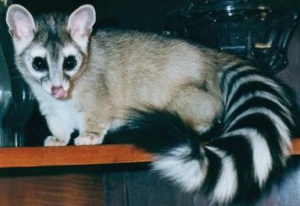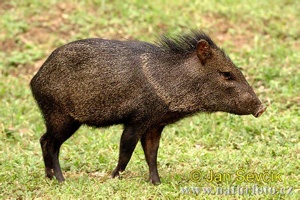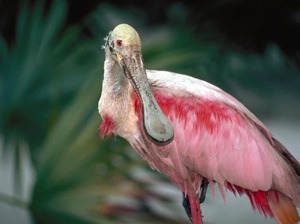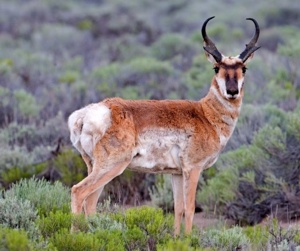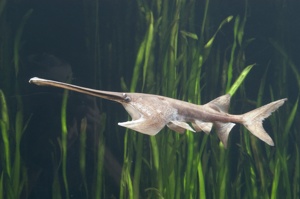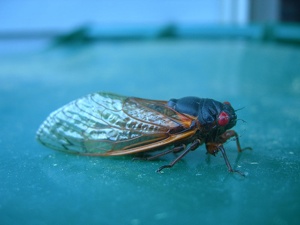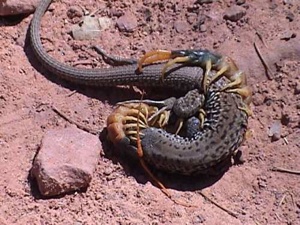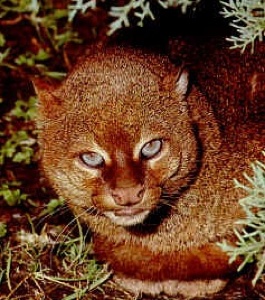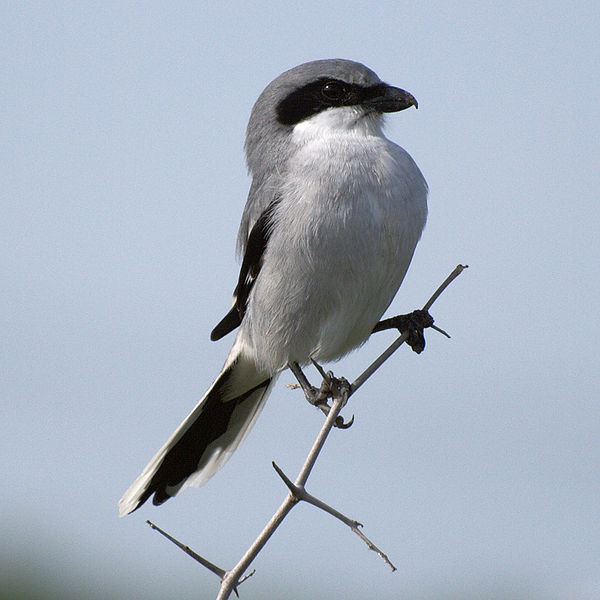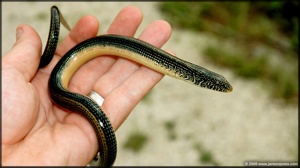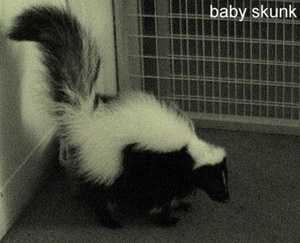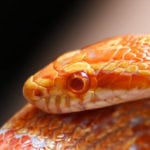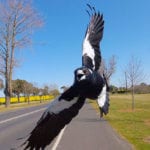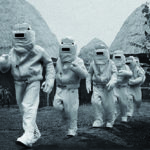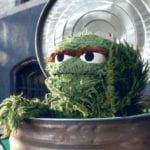 Technology
Technology  Technology
Technology  Humans
Humans 10 Everyday Human Behaviors That Are Actually Survival Instincts
 Animals
Animals 10 Animals That Humiliated and Harmed Historical Leaders
 History
History 10 Most Influential Protests in Modern History
 Creepy
Creepy 10 More Representations of Death from Myth, Legend, and Folktale
 Technology
Technology 10 Scientific Breakthroughs of 2025 That’ll Change Everything
 Our World
Our World 10 Ways Icelandic Culture Makes Other Countries Look Boring
 Misconceptions
Misconceptions 10 Common Misconceptions About the Victorian Era
 Mysteries
Mysteries 10 Strange Unexplained Mysteries of 2025
 Miscellaneous
Miscellaneous 10 of History’s Most Bell-Ringing Finishing Moves
 Technology
Technology Top 10 Everyday Tech Buzzwords That Hide a Darker Past
 Humans
Humans 10 Everyday Human Behaviors That Are Actually Survival Instincts
 Animals
Animals 10 Animals That Humiliated and Harmed Historical Leaders
Who's Behind Listverse?

Jamie Frater
Head Editor
Jamie founded Listverse due to an insatiable desire to share fascinating, obscure, and bizarre facts. He has been a guest speaker on numerous national radio and television stations and is a five time published author.
More About Us History
History 10 Most Influential Protests in Modern History
 Creepy
Creepy 10 More Representations of Death from Myth, Legend, and Folktale
 Technology
Technology 10 Scientific Breakthroughs of 2025 That’ll Change Everything
 Our World
Our World 10 Ways Icelandic Culture Makes Other Countries Look Boring
 Misconceptions
Misconceptions 10 Common Misconceptions About the Victorian Era
 Mysteries
Mysteries 10 Strange Unexplained Mysteries of 2025
 Miscellaneous
Miscellaneous 10 of History’s Most Bell-Ringing Finishing Moves
10 American Animals You Don’t Know
When tourists think of American wildlife, certain national treasures come to mind. American Bald Eagle (Haliaeetus leucocephalus). American Bison (Bison bison). Bluegill Fish(Lepomis macrochirus). But here are 10 North American animals I’ll bet you are less familiar with. The amazing thing is, I have met people who live in the areas that these animals also live in, and they have no idea they existed!!!
10. Ringtail Cat Bassariscus astutus
Now isn’t this animal a Disney creation? Big dark eyes, ring tail, nocturnal, and crunches up pesky mice and can be tamed? (Only if possession of one is legal to possess in your state!) Check out the cuteness factor… it’s at 11! These little guys were known as “miner’s cats” and early miners did use them as rodent exterminators.
The first time I remember seeing one of these was when I was a child and watching a Disney Series, “The Secrets of Old Glory Mine”, made in 1976, on the newly minted Disney-channel on cable. (Ah… the 80’s…) Hence my utmost fascination with all things Procyonid … that’s the mammals in the raccoon family, for peeps not in the know!
9. Collared Peccary Pecari tajacu
This ain’t no oinker! This little pig-like mammal evolved right here in North America. They are cute, territorial, and generally ignore humans. They cannot be domesticated and live in family groups.
Peccaries are hardly seen, because they are highly secretive. If you live in the Southern United States, these little guys can be found in desert environments, usually munching on Prickly Pear.
8. Roseate Spoonbill Platalea ajaja
Here is a South Florida Treasure! (got to represent!) This moderately unattractive bird is by far one of the most beautiful birds! They evolved that unusual proboscis to feed on tiny crustaceans, snails, insects, and various other squishy denizens of the murky mangrove swamps of the Southern United States. Seeing a pair of these courting one another is a sight to behold! They are a social species, and are unmistakable upon first being viewed.
7. Pronghorn Antelope Antilocapra americana
Where you aware that the second fastest land mammal in the world lives in North America? The pronghorn inhabits grassy plains and semi-desert environments in the western states. These guys can run in excess of 60 miles an hour, for hours! Guess back before predator eradication, they had to be fleet-footed to escape from hungry wolves, mountain lions, and bobcats. Now they just have to worry about being hunted by sportsmen and habitat destruction.
6. American Paddlefish Polyodon spathula
Here is an ancient throwback to the Paleozoic era. (300 -400 million years ago) the Paddlefish has fossil evidence from before the first known dinosaurs left fossils!
This gentle, shy, ancient dweller of murky, slow-moving rivers is an American survivor. They have been captured extensively over the years for their eggs, known as roe or caviar. They also are susceptible to habitat destruction, for they require sandy-bottomed, slow moving rivers.
5. Periodic Cicada
Also known as the 17-year cicada, these harmless flying protein bars are a familiar site to those of us who live in the Northern states. (I believe that this past summer was the summer of the cicadas in Chicago.)
I witnessed the cicada spectacle back in the summer of 1990 as wide-eyed teenager in Chicago… and these orange-eyed, noisy, slightly annoying bugs where everywhere! They leave their molted skins on every possible vertical surface… trees, houses, people… There was a resounding beauty to them… they don’t bite since they have no mouth parts, all they do is grow, molt, and make other cicadas. Pretty nice gig, if you ask me.
4. Giant Desert Centipede Scolopendra heros
Okay. There are no animals I am afraid of. But these multi-legged wonders of nature give me a major case of the heebie-jeebies! I saw one at a reptile trade show a few years back. It was propped up in a glass container, devouring a mouse! It was like a train wreck… I couldn’t look away!
These rather large centipedes live in the Southern deserts of the United States and can reach lengths of 8 inches. They are primarily nocturnal, and like to hide under debris such as logs and rocks during the day to escape the desert heat. These guys can pack a pretty painful bite! So don’t be stupid… no touchy!
Afterword: I discovered that the Giant Centipede is extremely maternal and protects her eggs and young! Kinda neat… I have a newfound respect for Arthropods that don’t bail on their young…
3. Gulf Coast Jaguarondi Puma yaguarondi cacomitli
The jaguarondi is a unique feline that is native to Central America and has a remnant population living Southern Texas. These reclusive cats are unusual looking, resembling an animal more weasel-like than cat-like. They are beautiful and rare. They prey on peccaries, rabbits, and birds. Habitat destruction is their main threat on survival.
Afterword: There is supposedly a small wild population of non-native Jaguarondis living in Florida. I can’t find too much info on them, but I have a personal friend who was a Florida Fish & Game Officer in the 70’s and he said he saw a pair while on patrol on Merrit Island.
2. Loggerhead Shrike Lanius ludovicianus
Also known as a “Butcher Bird” this little flying wonder shows that first impressions count, but aren’t always entirely true. A Shrike is a songbird that kills and impales its victims. Really.
In all seriousness, this is one no-nonsense predatory bird. It’s beak is hooked, like a hawk’s, and after it catches it’s prey, which may be insects or rodents, it then impales them on any suitable source. This is so that it has an anchor to hold its meal while it eats. You see they may have a raptor’s beak and hunting skill, but those spindly little songbird legs couldn’t hold down a mouse. So they use a natural fork.
1. Glass Lizards genus Ophisaurus
These guys are often mistaken for snakes. But, they are simply legless lizards. And no, snakes are not legless lizards!
Like many lizards, these little garden predators will “drop” their tails if grabbed or if they feel severely threatened. They eat insects and rodents, and are actually quite stunning to look at. The easiest way to tell the difference between them and true snakes is they blink. (true snakes have no eyelids)
Bonus: Skunk Mephitis Mephitis
Because I so love this species I will place them on this list. Many people smell these Native American animals frequently, but hardly ever see them.
There are several species that have evolved the usage of vile bodily fluids to discourage predators or for defense, but none quite so well as the Skunk. They can actually aim each of their anal glands individually and separately to ensure their target gets a full round of ammunition. No, skunks don’t poo on you. They use a secretion from their anal glands to make sure you remember to leave them alone in the future!
I also have a pet skunk I adore named peso. Go fig. I’m eccentric.
